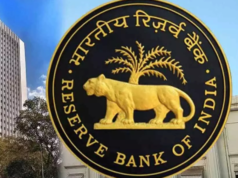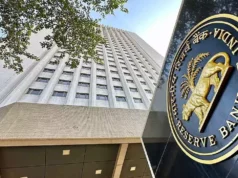Positive global cues, improved foreign flows, and rising investor mood all contributed to the Indian stock market’s impressive recovery. Calls for a further upswing before the end of the fiscal year 2024–2025 were sparked by the bulls’ return to activity and the restored buying enthusiasm across counters.
Investors will then keep an eye on a few significant market triggers during the final week of the current fiscal year (FY25). The last week of March, which marks the last developments of FY25, will determine the market’s course due to the expiration of March derivatives contracts, Donald Trump’s tariff pronouncements, foreign money inflow, domestic and international macroeconomic data, and global market cues.
Due to bargain hunting and foreign investment, the NSE 50 index had its best week in more than four years, while the domestic equity benchmarks, the Sensex and Nifty 50, continued their winning streaks for five days in a row.
Friday saw a 0.69 percent increase in the NSE Nifty 50 to close at 23,350.4 and a 0.73 percent increase in the BSE Sensex to 76,905.51, both of which were six-week closing highs. Over the course of the week, the frontline indexes increased by almost 4.2%.
The larger midcaps and small-caps saw their largest weekly increases in roughly five years, rising 7.7 and 8.6 percent, respectively. It was the strongest week for the Indian rupee in over two years. The Nifty 50 is still down roughly 11% from its peak. Equity investors have made ₹22.12 lakh crore in the five-day stock surge.
Technical purchasing and value accumulation from important demand zones, rather than any significant fundamental changes, were the main drivers of the market’s upward trend. Nonetheless, worries about trade tariffs and global socioeconomic challenges continue, according to Puneet Singhania, director of Master Trust Group.
With a few fresh initial public offers (IPOs) and listings planned across the mainboard and small and medium business (SME) divisions, the primary market is expected to see a muted trend this week. From a technical and domestic perspective, this week will be crucial. Investors will keep an eye on developments at the fiscal end as well as macroeconomic data from around the world.
D-Street will see five new listings and four new IPOs.
There are currently no new issues in the mainboard sector that are available for subscription this week. Four new issues in the SME section will be available for subscription. Five SMEs’ shares will be listed on either the NSE SME or the BSE SME.
FII Activity
By converting to net buyers, foreign institutional investors (FIIs) took advantage of favorable values and accelerated the market’s growth. The market’s surge was further supported by a net inflow of ₹5,819 crore from FIIs and ₹4,337.80 crore from domestic institutional investors (DIIs) in the cash segment.
“Recent behavior indicates that India’s FII approach has changed. Following days of unrelenting selling, FIIs finally turned into purchasers last week, making a substantial purchase of ₹3,255 crore on March 21 through the exchanges. The Chief Investment Strategist of Geojit Investment Services, Dr. VK Vijayakumar, stated that the selling intensity had begun to decrease earlier
From March to March 21, a total of ₹31718 crore worth of FII was sold. With a total debt investment of ₹10,955 crore from March to March 21st, the pattern of FII purchasing debt persisted.
“The market rallied during the week as a result of the recent reversal in FII selling, which enhanced market sentiments. One may argue that the shift in FII strategy was influenced by favorable domestic factors, such as a recovery in growth and a drop in inflation, as well as a reduction in the value of the dollar,” Dr. VK Vijayakumar continued.
Global Cues
The US markets will be keenly monitored globally, and investor sentiment is anticipated to be influenced by GDP growth figures and updates pertaining to tariffs. Despite a brief recovery for US markets following a steep drop, conflicting signals point to further volatility in the upcoming sessions.
On March 25, the US House Price Index for January—which tracks monthly variations in the average cost of single-family homes—will be made public. On March 26, the UK’s February inflation rate will be made public.
According to Puneet Singhania of Master Trust Group, US officials acknowledged growing economic uncertainty but reaffirmed their estimate of a 50 basis point rate drop this year, in line with December projections.
The performance of the economy in the wake of recent policy choices by the US Federal Reserve will be reflected in the Q4 GDP growth rate, which is scheduled to be reported on March 27. It will also provide information on whether growth is in line with changing monetary conditions.
Since the US PCE and Core PCE data releases are crucial in determining US Fed policy outlooks and have broad ramifications, they will be widely followed. On March 28, the UK GDP figures for the fourth quarter will be made public.
Corporate Action
Next week, beginning on Monday, March 24, shares of TVS Motor, Samvardhana Motherson, REC, and Mishra Dhatu Nigam Ltd., among others, will trade ex-dividend. Certain stocks’ shares will also trade ex-bonus. Verify
Technical View
Technically speaking, the Nifty 50 has surged to a critical resistance level of about 23,400 following its recent breakout from the 22,250–22,650 area. Beyond this point, a firm move might pave the way for additional gains.






